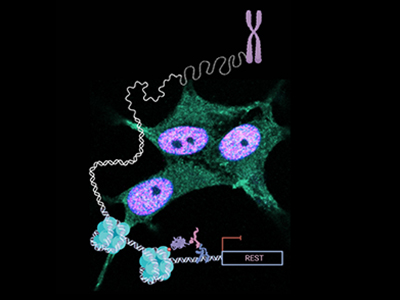
Scientists identify a molecular switch that stops a deadly form of the disease, uncovering new avenues for precision cancer treatments.
In a breakthrough study co-led by Vancouver Coastal Health Research Institute researchers, Drs. Christopher Ong and Yuzhuo Wang have identified for the first time a signalling cascade that can be targeted to switch off a form of late-stage prostate cancer.
“Our results pave the way for new precision medicine approaches for prostate cancer, particularly to stop the development of severe disease.”
This finding comes on the heels of a sharp increase in treatment-resistant prostate cancer. Similar to the emergence of antibiotic-resistant bacteria, scientists have seen the transformation of more common and treatable forms of prostate cancer, called prostatic adenocarcinoma, into a therapy-resistant form called neuroendocrine prostate cancer (NEPC). By blocking this cascade, researchers can not only prevent but also reverse this dangerous transformation.

Adenocarcinoma affects the prostate gland cells that produce prostate fluid. Accounting for roughly 95 per cent of prostate cancers, it also has a higher survival rate. Most prostate adenocarcinoma can be treated using gold standard anti-androgen medications that block the hormones in the body that drive the cancers’ development and proliferation.
NEPC, on the other hand, involves cancer cells with features of neuronal cells of the nervous system. In rare cases, these types of tumours may be the initial presentation of prostate cancer in a patient. More often, adenocarcinoma transforms into NEPC — often following intensive hormone treatments.
“Anti-androgen hormone therapy is our best first-line defence against prostate cancer,” emphasizes Ong. “However, cancer is a complex disease that can change and mutate over time. In this case, some prostate cancers evolve in response to therapy, moving in a troubling direction to a more severe tumour.”
“One of the biggest challenges that we are facing in prostate cancer precision medicine is a 20 per cent uptick in NEPC,” says Ong. “This is harder to treat and, devastatingly, often has a survival rate of less than one year.”
Discovery at the intersection of leading research and state-of-the-art equipment
Ong and his team identified for the first time that the CXCR4-LASP1-G9a-SNAIL (CXCR4) signalling pathway — comprising four genes: CXCR4, LASP1, G9a and SNAIL — plays a significant role in how NEPC evades anti-androgen treatment. The research team concluded that CXCR4 could be a target for personalized medicine approaches that switch prostate cancer from a treatment-resistant to a more treatable disease.
“We discovered that CXCR4 is a critical molecular switch that facilitates the conversion of prostate adenocarcinoma to NEPC.”
Using state-of-the-art single-cell RNA sequencing technology, researchers observed the genetic expressions of individual cells within excised prostate cancer tissue samples. Their analysis revealed that prostate cancer cells were leveraging the CXCR4 axis located within cells to circumvent anti-androgen therapy and to hijack the cell. When the team blocked the CXCR4 signalling pathway, they were able to stop and even reverse NEPC.
“When we blocked CXCR4, we observed the conversion of NEPC back to prostate adenocarcinoma.”
Additionally, the research team discovered that the CXCR4 pathway was also highly expressed in NEPC cancer cells themselves, which could be targeted using innovative cancer treatments like radioligand therapy.

“Radioligand therapy, and similar techniques at the forefront of cancer research, is an exciting new avenue for the development of patient-tailored cancer care,” states Ong. “With the expression of CXCR4 in NEPC cancers, CXCR4 is a promising candidate for exploration as a radioligand therapeutic target.”
“There is potential for a radioligand precision cancer therapy that binds to CXCR4 with the goal to invade and destroy neuroendocrine cancer cells.”
CXCR4 may also be present in other cancers that can mutate into neuroendocrine forms, such as breast and lung cancers.
“Research is discovering more examples of cancers that can evade targeted therapeutics by switching to a neuroendocrine form,” Ong explains. “Next steps will be to pursue additional studies and clinical trials to fully explore the potential of CXCR4 inhibitors in cancer treatment interventions.”


